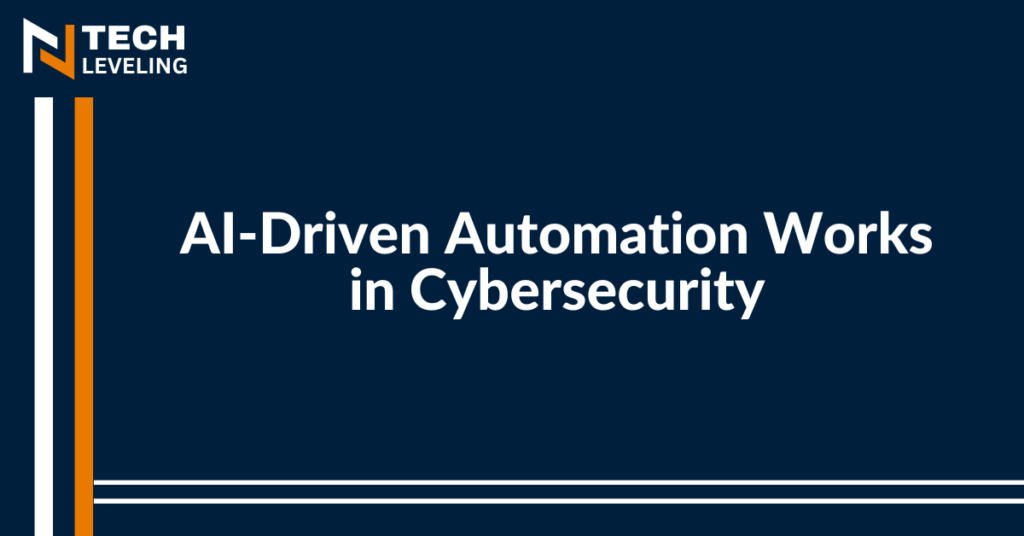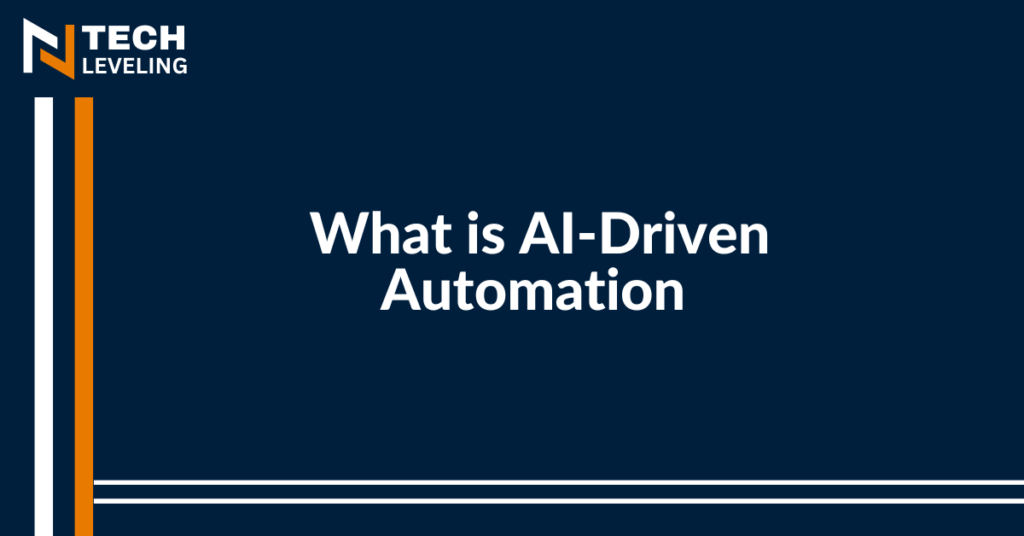How AI-Driven Automation Works in Cybersecurity

Cybersecurity threats are evolving rapidly, and traditional security measures struggle to keep up. AI-driven automation in cybersecurity is transforming the way organizations detect, prevent, and respond to cyber threats. By leveraging machine learning, behavioral analysis, and automated threat detection, AI enhances security systems, making them smarter and more proactive.
In this article, we will explore how AI-driven automation works in cybersecurity, its key benefits, challenges, and real-world applications.
Table of Contents
What is AI-Driven Automation in Cybersecurity?

AI-driven automation in cybersecurity refers to the use of artificial intelligence (AI) and machine learning (ML) to identify, prevent, and respond to cyber threats with minimal human intervention. These systems analyze massive amounts of data, detect anomalies, and automate security processes, reducing response times and improving overall protection.
AI-powered security tools use techniques like:
✔ Threat intelligence analyzingast datasets to detect potential cyber threats
✔ Behavioral analysis::identifyingg unusual user activity patterns
✔ Automated incident response – reactingo attacks in real-time
How Does AI-Driven AutomationWorks in Cybersecurity?
AI in cybersecurity functions through multiple stages, each improving threat detection and response:
Threat Detection Using AI
AI-driven security systems continuously scan networks for potential threats. Machine learning models analyze data from various sources, including:
- User behavior monitoring (e.g., login attempts, data transfers)
- Network traffic analysis (detecting unusual spikes or patterns)
- File scanning (identifying malware and phishing attacks)
Example: AI can detect zero-day attacks (new, unknown cyber threats) by analyzing behavior rather than relying on predefined signatures.
Automated Incident Response
When a threat is detected, AI-driven cybersecurity tools can take immediate action without human intervention. This includes:
✔ Blocking malicious IPs before they infiltrate networks
✔ Isolating compromised devices to prevent malware spread
✔ Alerting security teams with real-time threat insights
Example: If an AI system detects an unauthorized attempt to access sensitive company data, it can automatically block the access and notify security teams.
Behavioral Analysis & Anomaly Detection
AI continuously monitors user behavior and network activities to identify suspicious actions. If an employee suddenly accesses large amounts of sensitive data outside working hours, the AI flags it as potential insider threat activity.
Example: AI-powered User and Entity Behavior Analytics (UEBA) tools, like Splunk and Darktrace, track behavioral patterns and detect anomalies.
AI in Phishing and Malware Detection
AI-driven tools scan emails, files, and websites to detect phishing attacks and malware. They analyze:
Email sender reputation
URL and attachment behavior
Text patterns and intent
Example: Google’s AI-powered Gmail security detects and blocks 99.9% of phishing attempts before they reach users.
5. AI-Powered Threat Intelligence
AI-driven cybersecurity platforms collect and analyze global cyber threat intelligence to predict future attacks and improve security defenses.
Example: AI can analyze millions of hacker forum discussions, dark web activities, and previous attack patterns to identify emerging threats.
Key Benefits of AI-Driven Cybersecurity Automation

🔹 Faster Threat Detection: AI can analyze vast amounts of security data in real-time, reducing detection time.
🔹 Reduced Human Errors: Automating security processes minimizes mistakes caused by fatigue or oversight.
🔹 Cost-EeffectiveSecurity: AI reduces the need for large cybersecurity teams, cutting operational costs.
🔹 24/7 Protection: AI-driven systems monitor threats round the clock, even when security teams are offline.
Challenges of AI in Cybersecurity
While AI improves cybersecurity, it also faces challenges:
False Positives & Negatives: AI may flag harmless activity as a threat or fail to detect advanced attacks.
High Implementation Costs: Developing AI-driven security solutions requires investment in data infrastructure and skilled professionals.
AI-Powered Cyber Threats: Hackers also use AI to bypass security defenses and automate attacks.
Real-World Applications of AI in Cybersecurity
1. AI in Banking & Financial Security
Banks use AI-driven fraud detection systems to monitor unusual transactions and prevent account takeovers.
Example: JPMorgan Chase’s AI system detects credit card fraud in milliseconds.
2. AI in Cloud Security
Cloud platforms like AWS and Microsoft Azure use AI-powered threat detection to protect businesses from DDoS attacks, unauthorized access, and malware.
3. AI in Enterprise Cybersecurity
Companies like IBM and Cisco use AI-driven Security Information and Event Management (SIEM) tools to automate threat response.
Future of AI-Driven Cybersecurity
By 2030, AI-driven cybersecurity is expected to become even more advanced, predictive, and automated. Companies will rely on self-learning AI models that can adapt to new hacking techniques and cyber threats without human intervention.
Emerging Trends:
AI-powered deception technology to trick hackers into attacking fake systems
Autonomous cybersecurity agents that detect and prevent attacks in real-time
AI-driven security analytics for faster decision-making
FAQs
Can AI completely replace cybersecurity professionals?
No, AI enhances cybersecurity but cannot fully replace human expertise. Security teams are still needed for complex decision-making and strategy planning.
How does AI detect cyber threats?
AI detects cyber threats using machine learning models, behavioral analysis, and pattern recognition. It continuously learns from past attacks and security data.
Is AI cybersecurity expensive?
AI cybersecurity solutions can be costly but save money in the long run by reducing manual effort, preventing breaches, and improving response times.
Conclusion
AI-driven automation is revolutionizing cybersecurity, helping organizations detect and prevent cyber threats faster and more efficiently. While challenges exist, AI will continue to play a crucial role in protecting businesses, governments, and individuals from cybercrime.
🔹 Are you ready to embrace AI-driven security? Let us know in the comments!

